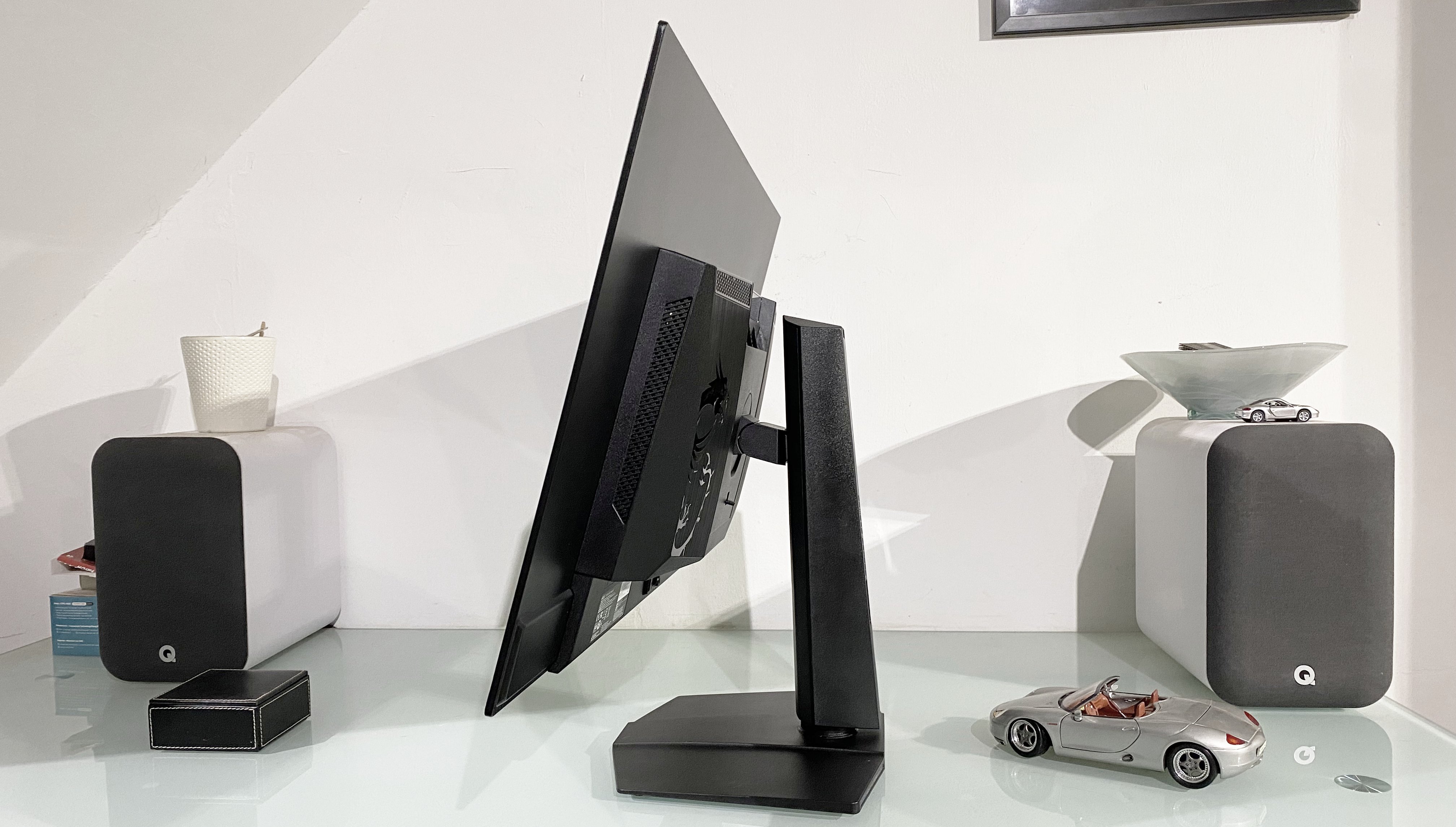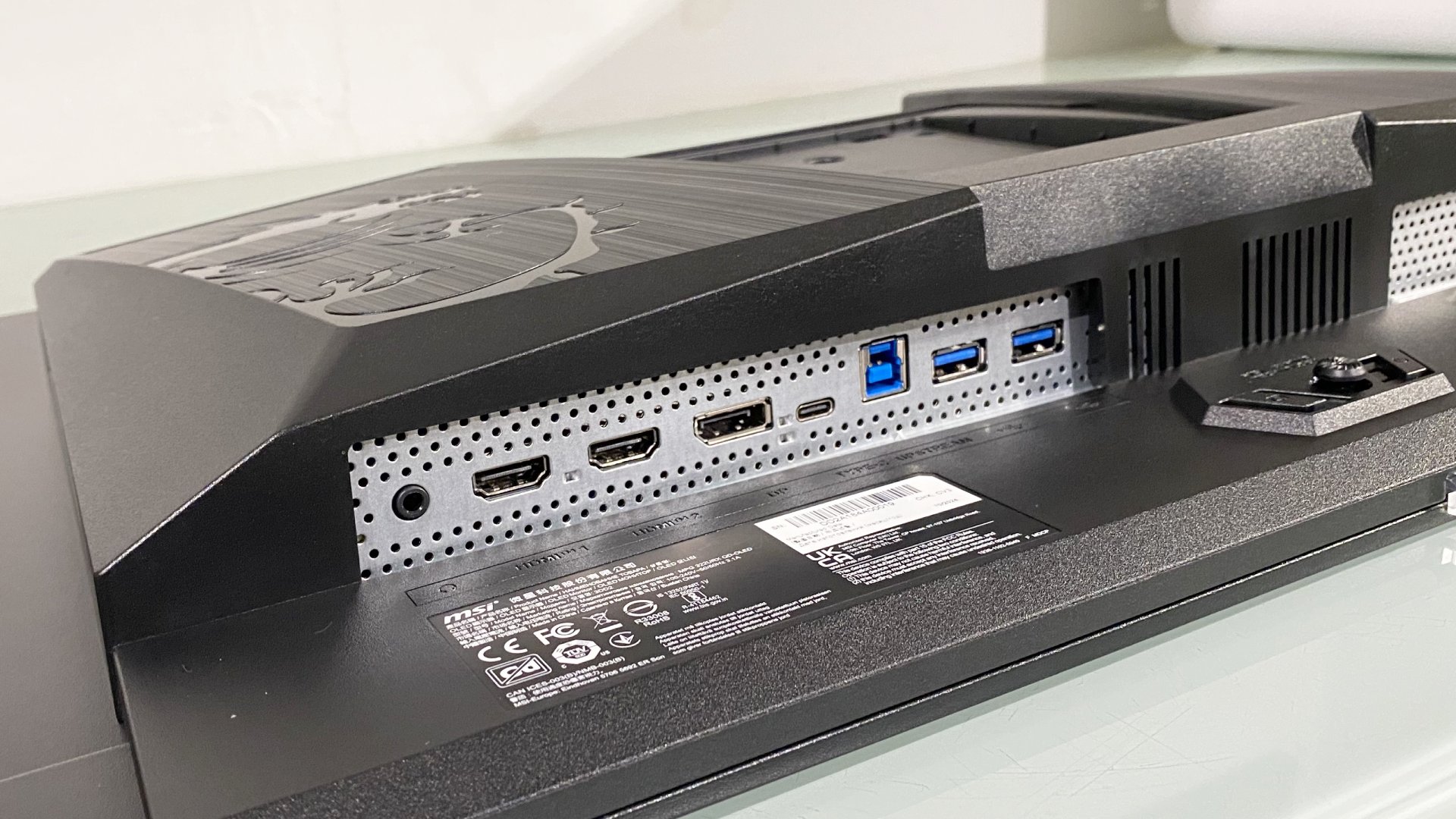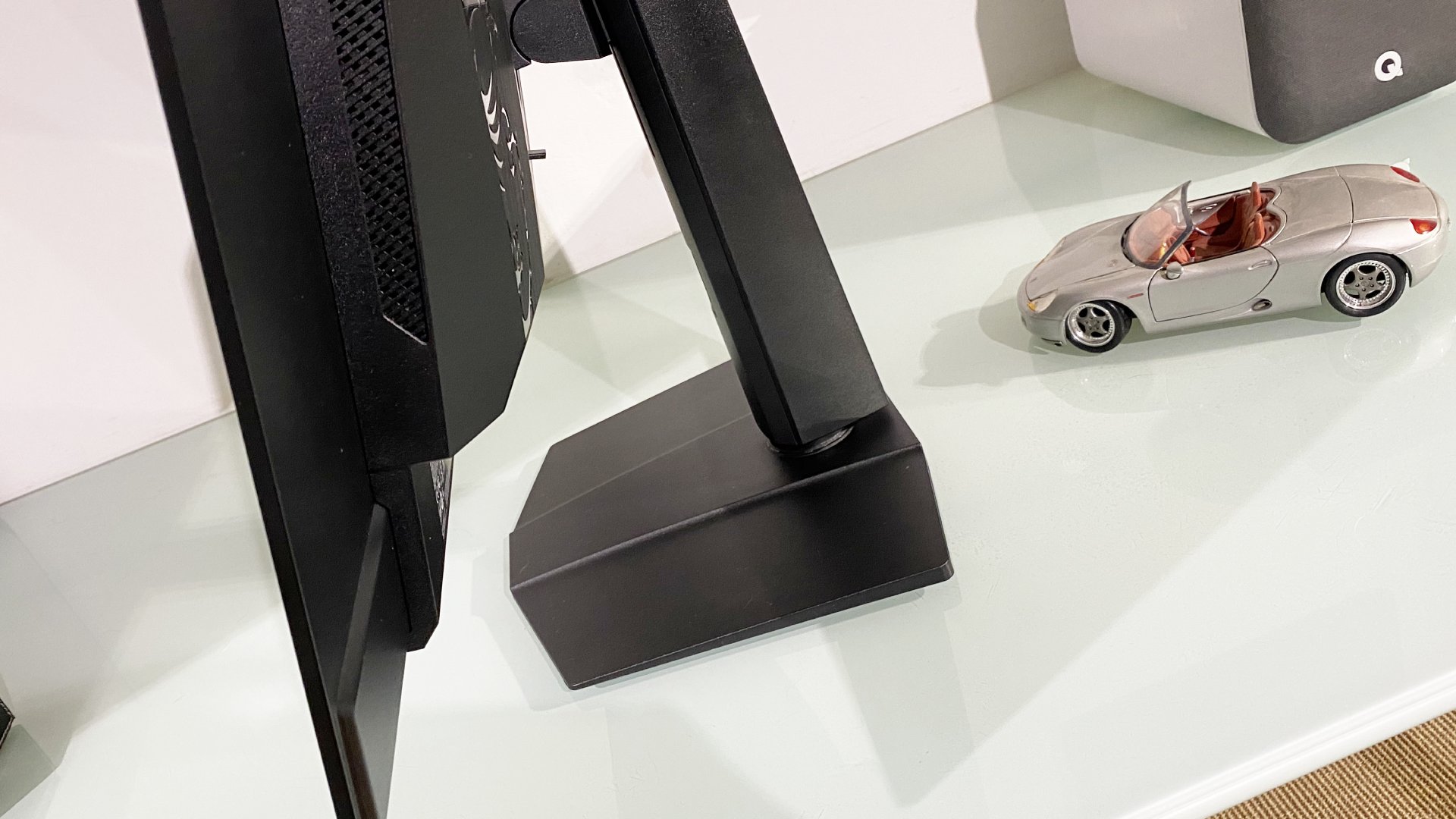If familiarity breeds perhaps not contempt but at least apathy, the MSI MPG 322URX has its work cut out. Along with the broader reality that OLED monitors are no longer exotic or even terribly novel—what with zillions of different models and countless panel sizes, shapes, specs, and resolutions—this particular monitor is more of a refresh than a genuinely new model.
Indeed, the basics are exactly the same as the MSI MPG 321URX I reviewed just over a year ago. Both that older monitor and the new 322URX are 32-inch 4K displays with Samsung QD-OLED panels. Indeed, they both use the same generation of Samsung QD-OLED technology.
Thus the 250 nit full screen SDR and 1,000 nit peak HDR brightness ratings are carried over untouched, as is the 240 Hz refresh rate and 0.03 ms response time. Both monitors sport DisplayHDR True Black 400 certification and glossy screen coatings, too.
MSI MPG 322URX specs
Screen size: 32-inch
Resolution: 3,840 x 2,160
Brightness: 250 nits full screen, 1,000 peak HDR
Response time: 0.03 ms
Refresh rate: 240 Hz
HDR: DisplayHDR True Black 400
Features: QD-OLED panel, HDMI 2.1, DisplayPort 2.1a, USB Type-C with 98 W power delivery, USB Type-A hub
Price: $1,299 | £1,284
What’s more, the design is entirely unchanged. The all black chassis has a very thin casing for QD-OLED panel itself, and then a separate box on the rear for the electronics, integrated power supply and ports. As before, there’s a light smattering of RGB lighting on the rear. There’s a slight whiff of teenage gamer to the design on the rear, but it’s pretty subtle and the overall look is fairly slick.
At this point, you’ll be wondering what actually has changed, and the answer is an upgrade from DisplayPort 1.4 to DisplayPort 2.1 UHBR 20. That means increased bandwidth and the ability to hit the full 240 Hz refresh without the use of Display Stream Compression (DSC).
Of course, DSC does actually do what it says on the tin, namely reducing bandwidth requirements in a visually lossless manner while also adding little to no latency. The upshot is that, in practice, you can’t tell the difference between 4K at 240 Hz with and without DSC. What’s more, only the very latest Nvidia RTX 50 series GPUs, plus AMD’s last two GPU generations, support DisplayPort 2.1. So, for many graphics cards, the distinction is entirely academic.
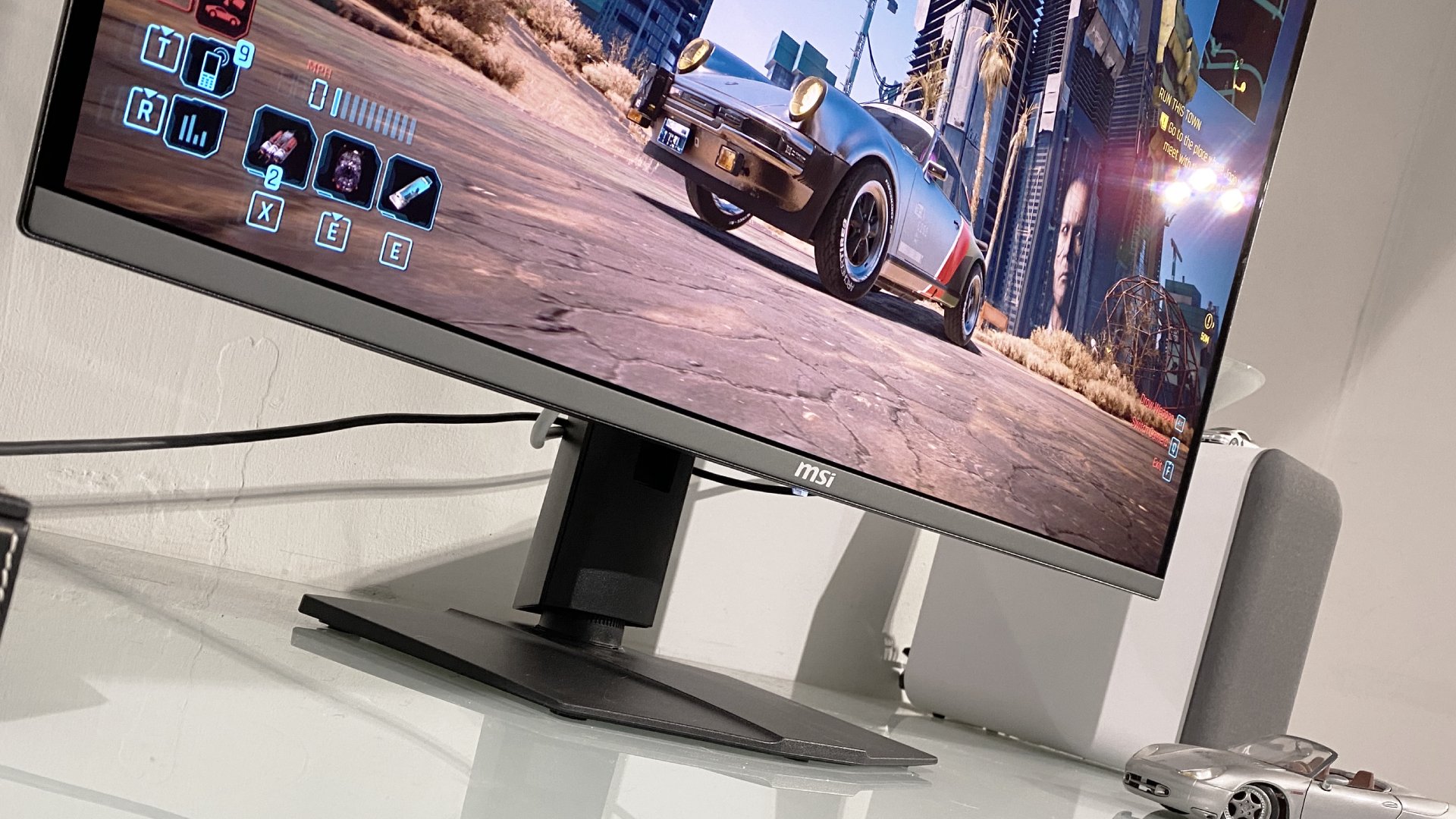
DisplayPort aside, as before, you also get HDMI and USB Type-C. The latter has had a tiny upgrade from 90 W power delivery to 98 W, but the single-cable functionality, including KVM switch capability and a USB Type-A hub, remains and is extremely welcome.
When you factor in the large screen size and 4K desktop resolution, this is the perfect panel to share between a desktop gaming rig and a laptop, a setup that is thoroughly catered for by the connectivity.
If the specs are essentially a carbon copy of last year’s model, there’s scope for minor improvements courtesy of firmware enhancements, even if those could in most cases also be applied to the older 321URX model. So, what’s this new MSI actually like?
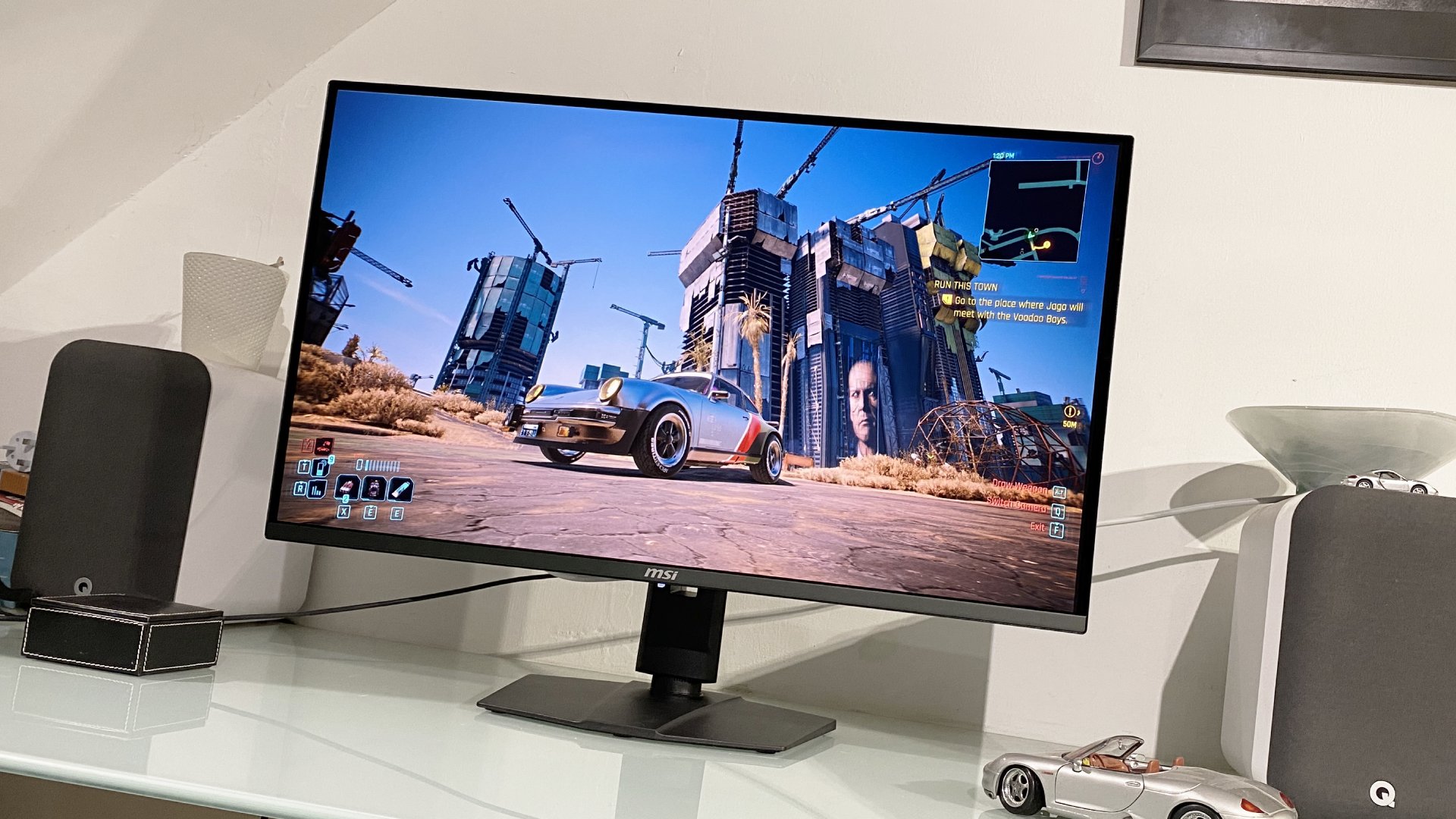
Initial impressions are very familiar, both for better and for worse. The pros and cons of this generation of 4K QD-OLED panel are immediately apparent. On the upside, that means super-sharp pixel density that’s good enough to make the non-standard RGB subpixel arrangement compared to LCD monitors a non-issue for font rendering, super vibrant and punchy colours, mostly excellent contrast and crazy-fast response performance.
The pros and cons of this generation of 4K QD-OLED panel are immediately apparent.
Less welcome but also carried over is the QD-OLED panel’s propensity to reflect ambient light. In really bright ambient conditions, it makes the panel itself look a slightly purplish grey (shown below), detracting from black levels and perceived contrast.
The colour temperature is also a touch warm, as is the norm for QD-OLED panels. Both of those issues may relate to the quantum dot material in the panel itself being unintentionally activated by ambient light. But whatever the cause, if it’s something you really don’t like, LG’s competing WOLED tech completely sidesteps the issue.
This monitor also offers a stellar HDR experience unless you’re in a very bright room. Without the old model on hand as a reference, it’s hard to be absolutely sure. But it seems like MSI has slightly improved the HDR 1000 mode. Certainly, HDR highlights in both video and games absolutely rip in that mode.
The downside is slightly attenuated overall brightness compared with the alternative DisplayHDR 400 True Black mode, which reduces the brightness of small details but gives a punchier overall appearance.
However, in either HDR mode, brighter outdoor game scenes do lack a bit of pop. That goes with the territory with this generation of HDR panel, and it’s my main reservation with this monitor.

Pretty soon, a new generation of OLED tech from both Samsung and LG is going to hit PC monitors. Very likely, it’s going to push full-screen brightness up to the 350 to 400 nit range, at which point it’s probably a solved problem. If that happens, monitors like this are going to feel a teensy bit obsolete, as good as they are in so many ways.
For the record, in SDR mode, full screen brightness is subjectively reasonable and suffers only very slightly from the noticeable intervention of an ABL or Automatic Brightness Limiter Algorithm. In other words, the brightness doesn’t change much depending on what’s being displayed. And that’s a good thing.
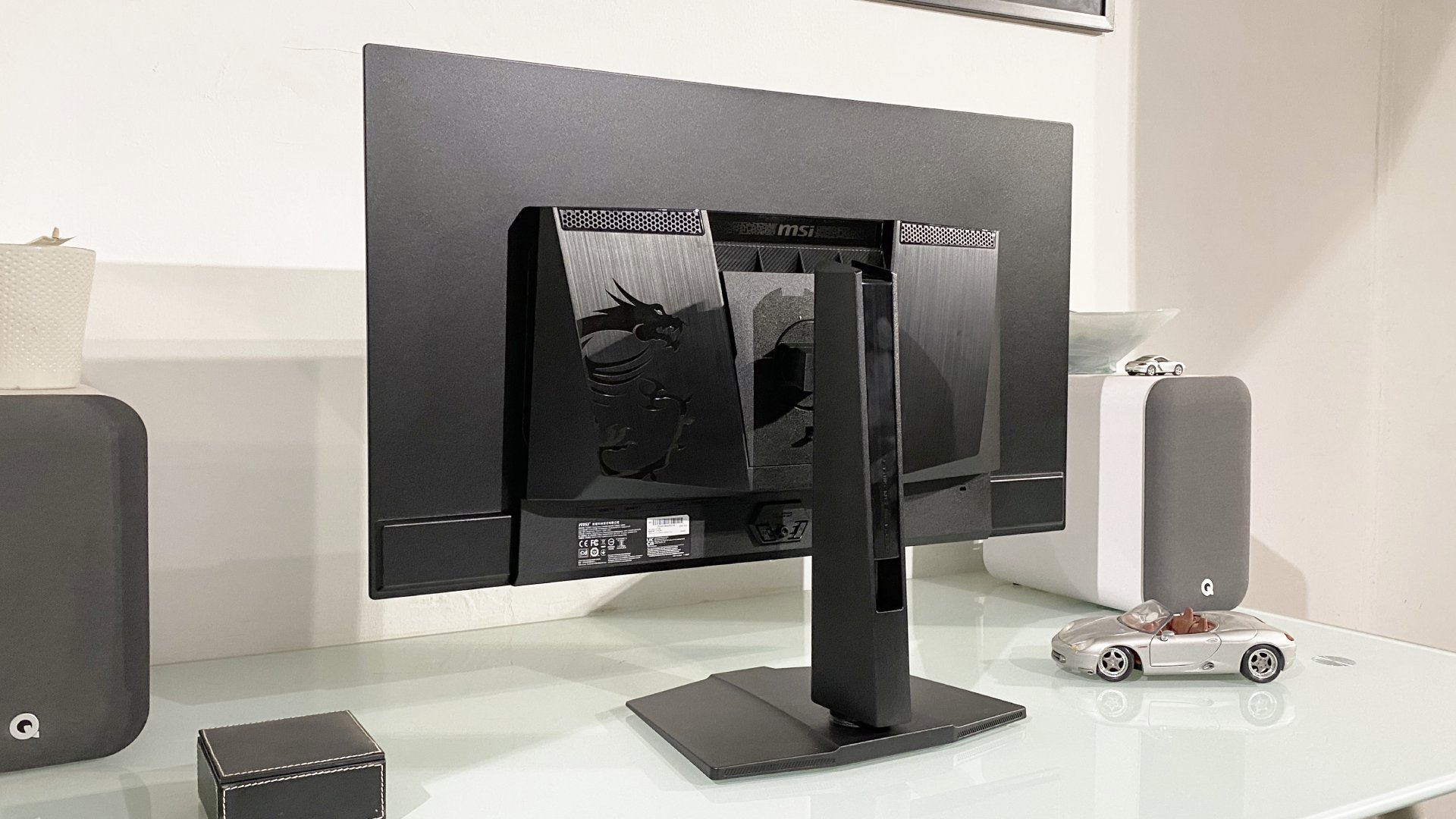
If you’ve only ever gamed on an LCD monitor, this thing will slightly blow your mind.
In HDR mode, SDR content is actually a lot brighter, for the most part, though the ABL intervention is a bit more apparent. But the overall calibration in both SDR and HDR modes is pretty nice, barring the aforementioned minor colour temp issue.
If that all sounds like damning with faint praise, I do feel something of a sourpuss picking holes in this mostly amazing monitor. The HDR experience can be absolutely stunning, it looks mostly fab on the desktop, the response is impeccable, as is the latency, provided you have a GPU that can do decent frame rates at 4K.
Buy if…
✅ You want OLED HDR goodness with 4K pixel density: In many ways, this is the ultimate gaming experience thanks to the combination of perfect-per-pixel lighting, incredible speed and 4K precision.
Don’t buy if…
❌ You’re expecting a big upgrade: For the most part, this monitor is exactly the same as the 4K MSI QD-OLED we reviewed a year ago.
Just to re-emphasise all that, if you’ve only ever gamed on an LCD monitor, this thing will slightly blow your mind. The problem is that I’ve seen countless different OLED monitors at this point, and I also have a fair inkling of what’s going to be available in the coming six to 12 months. So, I have to view this monitor in context.
That context currently includes a real-world price of around $1,300, and at that elevated level, it’s very, very hard to get genuinely excited. Just a few weeks ago, I spotted a 32-inch QD-OLED 4K monitor for barely more than $700. Sure, it was only a 165 Hz model. But 240 Hz alternatives can be had for sub $1,000, so it’s awfully hard to get behind something priced this high, especially when superior technology is coming down the track fairly soon.
All of which means I like this monitor, I really do. In many ways, it’s fantastic. I just can’t get my head around actually recommending it.



